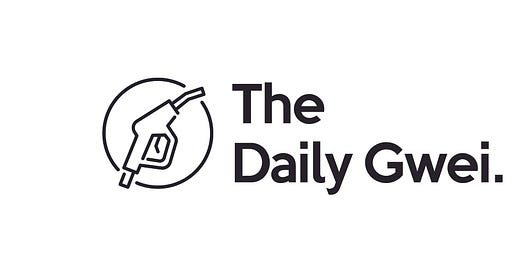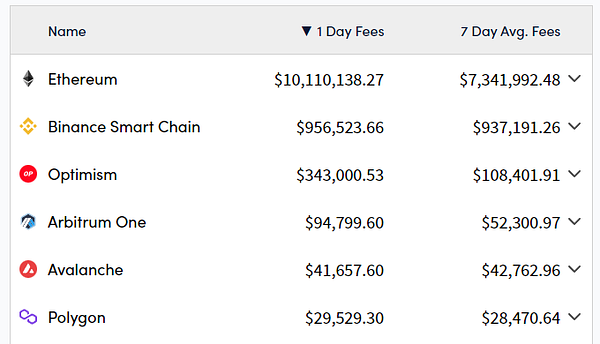The Ethereum Virtual Machine (EVM) is at the very heart of Ethereum and is what enables the network to process and execute transactions. It’s also what powers many of the other popular crypto-networks such as layer 1’s like Binance Smart Chain and layer 2’s like Optimism and Arbitrum (though Arbitrum uses the ‘AVM’ but is still EVM-compatible). Due to this, the network effects of both the EVM & Solidity are enormous and only getting bigger over time.
I always like to look at the fee revenue that a network generates because I believe it to be one of the only hard-to-game metrics for a crypto-network. Other metrics such as active addresses, number of transactions and total value locked (TVL) are trivial to game - especially on the more centralized and “cheaper” chains - I’ve written about this in more depth before here. By taking fee revenue, we can see in my tweet above that the top “earners” are all EVM compatible or equivalent chains - and all of them are smart contract chains - this tells us that demand for EVM blockspace is outpacing every other non-EVM network by orders of magnitude.
All of this activity just continues to reinforce the EVM and everything that’s built around it. Yes, the EVM and Solidity aren’t the “best tech”, but since when has that ever mattered in the world of software development? I mean, to take the most obvious example - every developer I know is not a fan of JavaScript and yet almost all websites on the internet use it. The same will be true for the EVM and Solidity - most developers will learn at least the basics even if they never use it.
Another major benefit of things being EVM-compatible/equivalent is that developers can relatively easily deploy their existing Ethereum layer 1 apps to any of the other EVM environments. This is because if the environment is truly 1:1 EVM-equivalent, then the code can just be redeployed without the need for time-consuming things like audits. It also means less overhead for the team since they don’t need to learn an entirely new development stack or learn how to use new tools - they can just use their existing knowledge and toolset. On top of this, users get the same experience as Ethereum layer 1 because all they need to do is change their RPC in MetaMask to use any EVM network.
All of the above acts like a self-reinforcing network effect machine for the EVM that is both extremely hard to break and compete with. This is one major reason why so many ecosystems that don’t use the EVM or Solidity have had a very difficult time getting enough developer and user interest. Will this trend continue into the future? I think so - but that doesn’t mean that other non-EVM ecosystems can’t grow & thrive - I’m particularly looking forward to the ones that emerge on layer 2, of course!
Have a great day everyone,
Anthony Sassano
Enjoyed today’s piece? I send out a fresh one every week day - be sure to subscribe to receive it in your inbox!
Join the Daily Gwei Ecosystem
All information presented above is for educational purposes only and should not be taken as investment advice.






